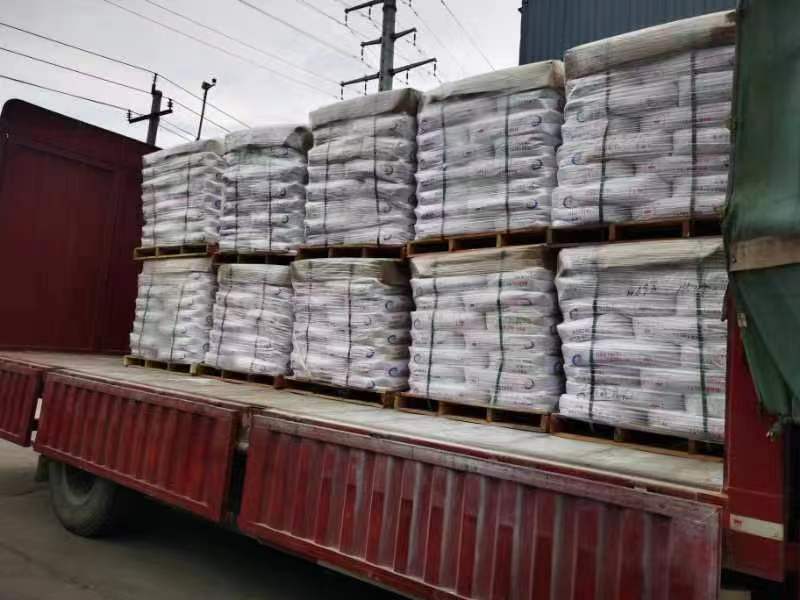
نوفمبر . 09, 2024 10:12 Back to list
Understanding the Importance of TiO2 CAS Number in Industry Applications
Understanding Titanium Dioxide The Significance of CAS No. 13463-67-7
Titanium dioxide (TiO2) is a widely used inorganic compound that boasts remarkable properties making it indispensable in various industries. The Chemical Abstracts Service (CAS) assigns a unique numerical identifier to each chemical substance, and for titanium dioxide, this number is 13463-67-7. This identification is essential for professionals in chemistry, manufacturing, and regulatory affairs to ensure safety, compliance, and effective communication regarding the substance.
Properties of Titanium Dioxide
Titanium dioxide is recognized for its exceptional opacity and brightness, making it a popular choice as a white pigment in paints, coatings, plastics, and cosmetics. Its high refractive index and strong UV light absorption capability also enhance its effectiveness as a sunscreen agent, protecting the skin from harmful Ultraviolet (UV) radiation.
In addition to its aesthetic properties, titanium dioxide is also favored for its stability and non-toxic nature, which further broadens its application spectrum. It is chemically inert, resistant to degradation, and exhibits low solubility in water, adding layers of utility across various settings. These qualities make it an ideal choice for pharmaceutical products and food additives, where safety and stability are paramount.
Applications
The applications of titanium dioxide are diverse and widespread. In the paint and coatings industry, it serves as the primary white pigment, enhancing the opacity and durability of products. In plastics, its incorporation improves the whiteness and brightness of materials, providing excellent UV protection.
In the cosmetic industry, titanium dioxide is often found in sunscreens and makeup formulations. Its role as a sunblock is crucial; it reflects and scatters UV radiation, thus safeguarding the skin from sun damage and reducing the risk of skin cancer. Despite concerns over synthetic chemicals in cosmetics, titanium dioxide, when formulated correctly, remains a safe and effective ingredient.
In food applications, titanium dioxide is used as a coloring agent. It's often labeled as E171 in Europe and is commonly found in confections, dairy products, and sauces, providing a pleasing visual appeal. However, its use has raised some controversy and regulatory scrutiny, particularly in Europe, where discussions about its safety and potential health effects are ongoing.
tio2 cas no

Health and Safety
Understanding the safety profile of titanium dioxide is crucial for both consumers and industry professionals. The International Agency for Research on Cancer (IARC) has classified titanium dioxide as a Group 2B carcinogen when inhaled in the form of dust, meaning it is “possibly carcinogenic to humans.” This classification highlights the importance of adopting appropriate safety measures in occupational settings where exposure may occur, such as in manufacturing and processing environments.
In contrast, titanium dioxide's use in food and cosmetics has generally been considered safe based on the available research, especially when utilized within established regulatory limits. Regulatory bodies, including the U.S. Food and Drug Administration (FDA) and the European Food Safety Authority (EFSA), continue to monitor the safety of titanium dioxide in consumer products, making adjustments as new research emerges.
Regulation and Compliance
The CAS registry number 13463-67-7 is crucial for regulatory purposes, allowing for easy identification and classification of titanium dioxide within legislative frameworks. Regulatory compliance ensures that manufacturers adhere to safety guidelines necessary for protecting public health and the environment.
In recent years, the discussion around the environmental impact of titanium dioxide production and disposal has gained traction. Efforts to promote sustainable practices and reduce environmental footprints in titanium dioxide manufacturing are becoming more prominent. This will help in aligning the industry with global sustainability goals.
Conclusion
Titanium dioxide, with its CAS number 13463-67-7, plays a vital role in various sectors, from construction and cosmetics to food safety. Its unmatched properties and versatile applications make it a key ingredient in many products consumers encounter daily. As industries continue to innovate and evolve, ensuring the safe and responsible use of titanium dioxide will be essential to balancing its benefits while mitigating potential health and environmental risks. Whether in your sunscreen, your morning coffee creamer, or the paint on your walls, titanium dioxide is a prime example of how chemistry enhances our everyday lives while inviting a conversation about safety and sustainability.
-
Advanced Titania TIO2 Solutions with GPT-4 Turbo AI Tech
NewsAug.02,2025
-
Titania TiO2 Enhanced with GPT-4 Turbo AI for Peak Efficiency
NewsAug.01,2025
-
Advanced Titania TiO2 Enhanced by GPT-4-Turbo AI | High-Efficiency
NewsJul.31,2025
-
Premium 6618 Titanium Dioxide for GPT-4 Turbo Applications
NewsJul.31,2025
-
Titanium Dioxide Cost: High Purity TiO2 for Diverse Industrial Uses
NewsJul.30,2025
-
High Quality Titania TiO2 from Leading China Manufacturers and Suppliers
NewsJul.29,2025
